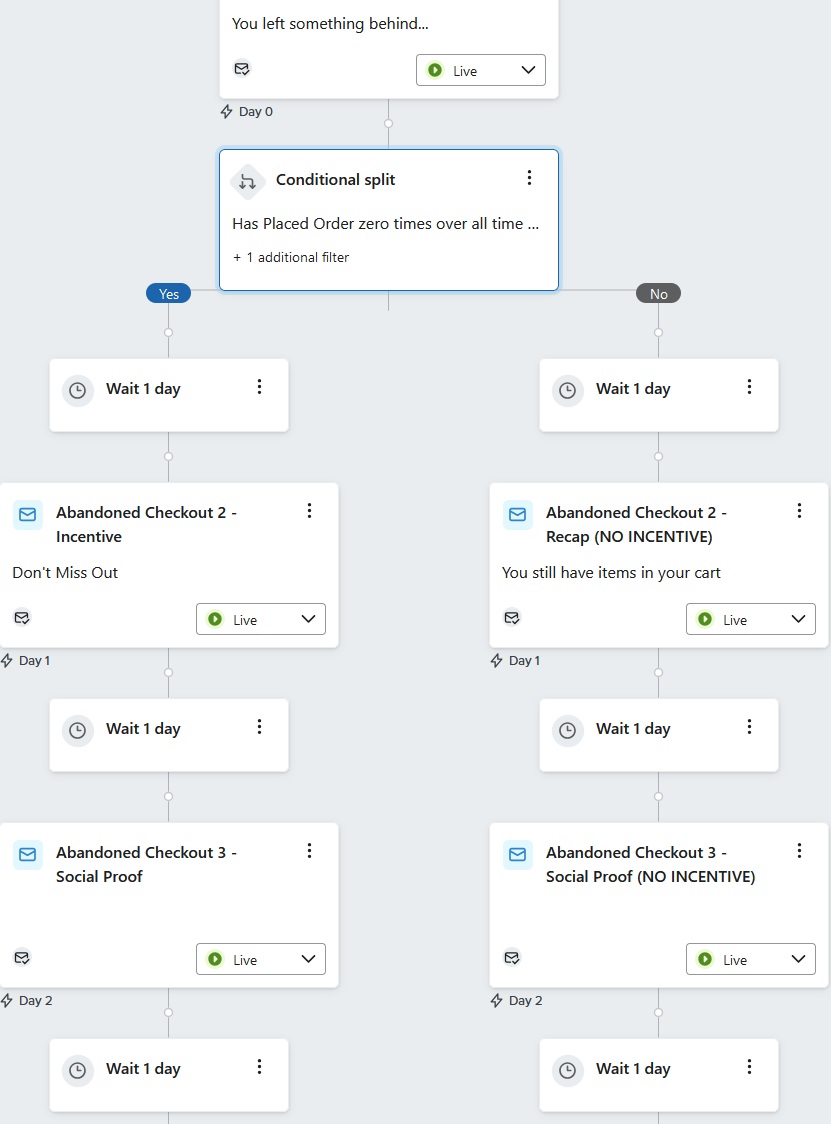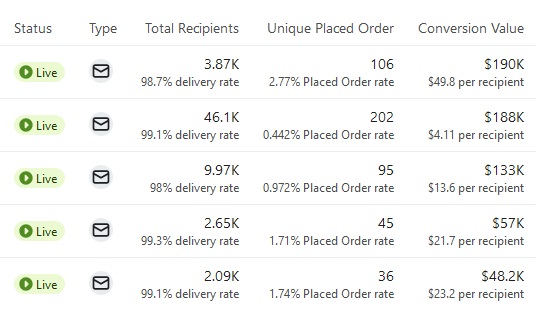How to Start Email Marketing:
Stop Wasting Time and Start Printing Money
You’ve heard the buzz about email marketing. Maybe you’ve even tried it. But let’s be real—if your inbox strategy involves guessing and hoping, you’re leaving stacks of cash on the table.
The question isn’t if you should start email marketing; it’s how to do it right. This guide will show you exactly how to get started without wasting time on fluff.

Why Email Marketing?
Here’s the truth: Every dollar you spend on email marketing can bring back $36. That’s not hype—it’s numbers.
- Direct Line to Your Customers: Social media is like shouting into a crowded room. Email is a one-on-one conversation with the people who actually want to hear from you.
- High ROI, Low BS: Algorithms don’t control email. You do. And when done right, it works like a vending machine—input effort, output revenue.
Ready to turn email into your business’s secret weapon? Let’s get into the steps.
First Steps To Creating Your Email Program
1. Get Your Tools in Place
Before you send a single email, you need the right setup. Think of this as building your foundation—if it’s shaky, everything collapses.
- Pick Your Platform: Start simple. Mailchimp if you’re just dipping your toes, Klaviyo if you’re ready to dominate. Don’t overthink it—just pick one and go. They all essentially do a similar thing. My personal preference is Klaviyo, its powerful and free for the first 250 signups. You can always import your list into a new platform later on.
- Grow Your List (The Right Way): No shortcuts. Buying lists is like buying rotten fruit—it stinks and doesn’t work. Build your list organically with opt-ins people actually want.
- Automate From Day One: Look for tools that handle the grunt work—welcome emails, follow-ups, and abandoned cart recovery. Automation isn’t just nice to have; it’s your ticket to scaling without burnout.
Pro Tip: Start with a basic signup form on your website. Make it so simple even a goldfish could fill it out—name(optional), email, done. Skip the endless fields asking for zodiac signs or shoe sizes.
Klaviyo includes its own simple form builder. Most email service providers(ESP) do or if you want some beautiful forms with tons of flexibility, go with my personal favorite Optimonk.
How to Design a Website Popup That Converts (Fast & Easy)
Next Stop: Building your list like a pro. Let’s get those subscribers rolling in.
2. Build Your Subscriber List
Your list is your lifeline. Without it, you’re yelling into the void. Here’s how to get people excited to hear from you (and not hit “unsubscribe” five seconds later).
- Offer Something They Actually Want: Nobody’s handing over their email for “updates.” Create a lead magnet—a free guide, discount, or exclusive access. Make it irresistible.
- Make Signing Up Stupid Easy: Your signup form should be so obvious it’s impossible to miss. Pop-ups, headers, footers—put it everywhere. And don’t ask for their life story—just their email.
- Capture In-Person Too: Got a brick-and-mortar store or an event booth? Use an iPad or old-school clipboard to grab emails. People love the personal touch.
Pro Tip: Use a clear CTA like, “Get 10% Off Your First Order—Sign Up Now.” Don’t overcomplicate it. The more direct, the better.
What to Avoid: Don’t beg. Don’t guilt-trip. And for the love of marketing, don’t bribe them with something lame. A 5% discount? Pass. Make it worth their while. Sure it will 'work' but your competitors are probably offering something better. Remember, its not just about the sale now... Its about lifetime value.
Next, we’ll cover what to say to these new subscribers so they actually open your emails. Stay tuned.
If you can't offer a download or discount at least having a signup form is better than nothing. Just understand that if they have no incentive to share their email, they aren't going to share it. Think about it, would you sign up just for news & updates? Or would you rather get something in exchange?
3. Write Emails People Actually Open
Newsflash: Nobody cares about your email unless you make them care. This is where the magic happens—or where it dies in the spam folder. Let’s get it right.
- Subject Lines Are Everything: If it doesn’t hook, it doesn’t get opened. Use curiosity, benefits, or urgency. Think: “You’re Losing Money Without This” or “3-Minute Hack for More Sales.”
- Talk Like a Human, Not a Bot: Nobody likes emails that sound like they were written by an AI from 2010. Keep it conversational and personal—add their name, reference their interests, or just be real.
- Less Is More: Keep your message short and sharp. People skim. If your email reads like a novel, it’s likely getting trashed.
Learn How To Write Human-Like Emails (Or Better) With AI
A Basic Structure That Works:
- Hook: Grab their attention with the first line.
- Body: Deliver value—tips, discounts, or something they care about.
- CTA: Be clear and direct. “Shop Now,” “Learn More,” or “Claim Your Discount.”
Copywriting Formulas That Convert
Problem-Agitate-Solution (PAS):
- Problem: “Struggling to get people to open your emails?”
- Agitate: “Every unopened email is lost revenue. It’s like talking to a wall.”
- Solution: “Here’s a 3-step formula to fix that today.”
Attention-Interest-Desire-Action (AIDA):
- Attention: “Want more clicks without spending more?”
- Interest: “Our top customers are seeing 2x engagement.”
- Desire: “Imagine your email list actually working for you.”
- Action: “Try this tip in your next email.”
Pro Tip: Write like you’re talking to one person, not an audience. Imagine writing to a friend—just with a killer offer attached.
What Not to Do: Don’t try to be too clever. Overly cryptic subject lines or jargon will kill your open rates. Be clear, not confusing.
Next up? Automation—how to let your emails do the heavy lifting. Let’s dive in.
4. Automate Your Workflow
Here’s the deal: Email marketing without automation is like driving a car without cruise control—inefficient and exhausting. Automating your emails turns your marketing into a machine that works 24/7, so you don’t have to. Done right, automation is the simplest way to scale, boost sales, and save your sanity.
These three flows are no-brainers. They’re easy to set up and have the biggest impact. Each one targets specific customer behaviors with laser precision.
- Welcome Flow
Trigger: When someone subscribes to your main list.
Why It Matters: First impressions count. This is your chance to introduce your brand, build trust, and guide them toward their first purchase. Your welcome flow can include a thank-you email with a discount, a showcase of your best-sellers, and an email addressing FAQs or objections like shipping and returns. - Abandoned Checkout Flow
Trigger: When someone adds items to their cart but doesn’t complete the purchase.
Why It Matters: Most people abandon carts—up to 70%. A well-timed nudge can recover a chunk of that lost revenue. Use this flow to remind them about their cart, create urgency with limited stock messaging, or sweeten the deal with a small discount. - Browse Abandonment Flow
Trigger: When someone browses your website but doesn’t add anything to their cart.
Why It Matters: These visitors are interested but undecided. A gentle follow-up keeps your brand top-of-mind and nudges them toward action. Highlight the products they browsed, suggest similar items, give them relevant info about your products, or offer free shipping to encourage the next step.

Example of an abandoned checkout flow logic
Pro Tip: Personalization is key. Mention the specific product they abandoned or browsed. Use their name and make it feel like you’re talking directly to them—not sending a generic blast. This can be accomplished using dynamic codes which are a feature in most good email service providers.
The Bottom Line: These three flows aren’t just “nice to have”—they’re essential. Set them up, and you’ll see results almost immediately.
Next, we’ll tackle measuring success. Because if you’re not tracking, you’re guessing—and guessing doesn’t pay the bills.
5. Measure What Matters
If you’re not measuring, you’re flying blind. Email marketing isn’t about sending a ton of emails and hoping for the best—it’s about tracking what works and doubling down. Let’s make sure you’re watching the right numbers.
The Key Metrics to Watch:
- Open Rate
This tells you if your subject line is doing its job. If nobody opens, nothing else matters. A good benchmark is 20-25% (varies by industry). If you’re below that, rethink your subject lines or audience targeting. Always be aiming to improve. When something goes well, investigate what it was and repeat with A/B test in the future to confirm your findings. - Click-Through Rate (CTR)
This measures how many people clicked a link in your email. This is where the real action happens. A good benchmark is 2-5%. If your CTR is low, your content or call-to-action might need work. - Conversion Rate
This is the holy grail—how many clicks actually turned into purchases, signups, or whatever your goal is. A good benchmark is 1-3%, depending on your industry. - Unsubscribe Rate
This is your red flag. If too many people are unsubscribing, you’re either emailing too often, missing the mark with your content, or targeting the wrong audience. Keep this below 0.5%. Unsubscribes aren't necessarily bad. You'd rather have an unsubscribe than someone marking an email as spam. Email lists have a natural churn rate over time as customers come and go. - Revenue Per Recipient (RPR)
The most important metric for your bottom line—how much money you’re making for every subscriber you send an email to. Focus on RPR to understand the true value of your list and the impact of your campaigns.

Example of various metrics for flows in this account
Pro Tip: Don’t obsess over vanity metrics like total sends or list size. A small, engaged list beats a big, unresponsive one every time.
How to Improve Your Metrics:
- Test everything—subject lines, send times, and CTAs. Small tweaks can lead to big wins. Make it a habit to run A/B tests for a single variable.
- Segment your list—send tailored content to different groups based on their behavior and preferences.
- Optimize your timing—analyze when your audience is most active and adjust your send schedule.
Tracking these numbers isn’t just about knowing how your emails are performing—it’s about understanding your audience and refining your strategy for maximum results.
Next, we’ll wrap it all up with common mistakes to avoid so you don’t sabotage your efforts before they take off.
6. Common Mistakes to Avoid
Here’s the hard truth: Email marketing can be your business’s best friend—or its biggest flop. The difference? Avoiding these rookie mistakes that make subscribers hit “unsubscribe” faster than you can say, “Dear Valued Customer.”
The Big Mistakes (and How to Dodge Them):
- Sending Too Many Emails
More isn’t better. If you’re bombarding people daily, you’re annoying them, not engaging them. Stick to a consistent schedule—enough to stay relevant, but not overwhelming. Still want to send daily? Try targeting a specific segment on your list. For example, if you have businesses and regular customers on your list, segment those groups and send a targeted email specific to each. - Writing Like a Robot
Nobody wants to read corporate jargon or emails that sound like they were spit out by AI. Talk like a human. Use humor, be personal, and remember: your emails are a conversation, not a lecture. If you choose to use AI take the time to communicate who your customers are and get really good at describing the style you want AI to write in. You CAN have quantity and quality with AI if you take the time to create great prompts. - Ignoring Segmentation
Sending the same email to your entire list is lazy—and it shows. Tailor your emails to different segments based on behavior, location, or interests. People are more likely to engage when they feel like you “get” them. - Skipping the Call-to-Action (CTA)
What’s the point of your email if there’s no action to take? Be clear and direct—tell them exactly what to do next: “Shop Now,” “Learn More,” or “Claim Your Discount.” You'd be surprised just how big of an impact a simple button can have. - Focusing on Looks Over Substance
A beautiful email is great, but if the content sucks, nobody cares. Focus on delivering value—whether it’s a tip, a discount, or just something worth their time. - Neglecting Mobile Optimization
Over half of emails are opened on mobile. If your email looks like a hot mess on a small screen, you’re losing out. Test every email to make sure it’s clean and readable on any device. Most ESP's have responsive layouts, but how you set them up can cause screen issues. - Not Testing Your Emails
Sending without testing is like throwing darts blindfolded. A/B test your subject lines, content, and CTAs. Find what works—and then do more of it.
Pro Tip: Keep an eye on your unsubscribe rate and spam complaints. If they’re creeping up, it’s time to revisit your strategy before things spiral out of control.
Email marketing isn’t rocket science, but it does take strategy. Avoid these common pitfalls, and you’ll be miles ahead of your competition.
7. Take Action Today
Here’s the truth: Your emails don’t have to be perfect to make an impact. Fancy graphics are nice, sure—like a luxury car. But when you’re just starting, plain text emails are like your trusty old vehicle. They’ll get you from point A to point B without the extra bells and whistles. And often, they’ll do it more efficiently by skipping past junk filters and feeling personal.
Stop worrying about creating the “perfect” email. Just start. Build your domain reputation, get your name in inboxes, and start talking to your customers.
Here’s Your Action Plan:
- Pick Your Platform: Choose a tool like Mailchimp or get started for free on Klaviyo. Set up your account and get comfortable with the basics. Don’t overthink it—just start.
- Create a Simple Signup Form: Add it to your website, social media, or even a physical location if you’ve got one. Keep it short and sweet: name, email, done.
- Write Your First Welcome Email: Introduce your brand, thank them for signing up, and offer something valuable—like a discount or free resource.
- Set Up a Basic Automation: Launch your welcome flow. This single step can turn casual signups into loyal customers with minimal effort.
- Send Your First Campaign: Don’t wait for perfection. Share a new product, a tip, or an offer. You’ll learn as you go.
Pro Tip: Progress beats perfection. Your emails won’t be flawless at first, but even simple, consistent communication will build trust and engagement over time.
Every day you wait is another day your competitors are stealing your customers’ attention. Start small, start simple, but for the love of ROI—just start.
Ready to take your first step? Your business (and your bank account) will thank you.
Need Help? Let Me Handle It for You
Rather have it done for you? If the idea of setting all this up feels overwhelming, I’ve got you covered. My email marketing services are designed to take the guesswork off your plate and deliver results—fast.
- What You Get: Custom email flows tailored to your business.
- Automated systems that work 24/7.
- Professional copywriting and designs that engage and convert.
Stop stressing and start seeing results. Let me build the email marketing engine your business deserves while you focus on what you do best—running your business.
Click Here To See My Services & Pricing